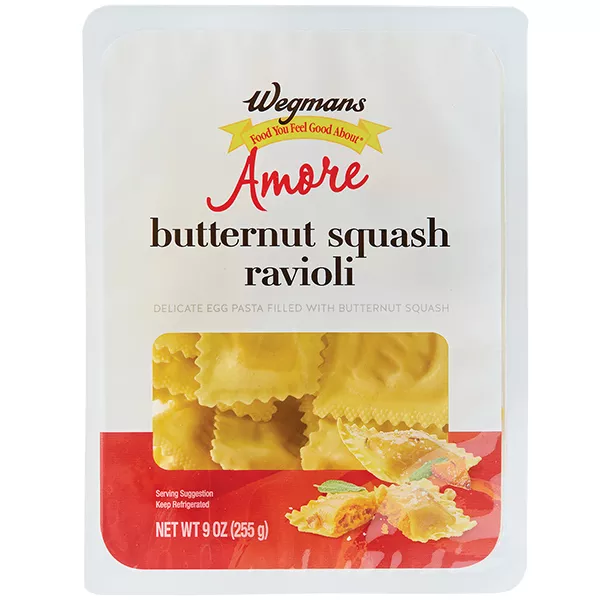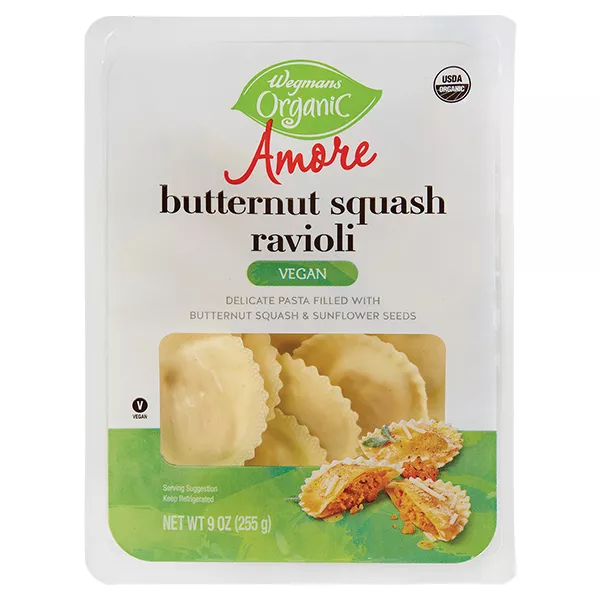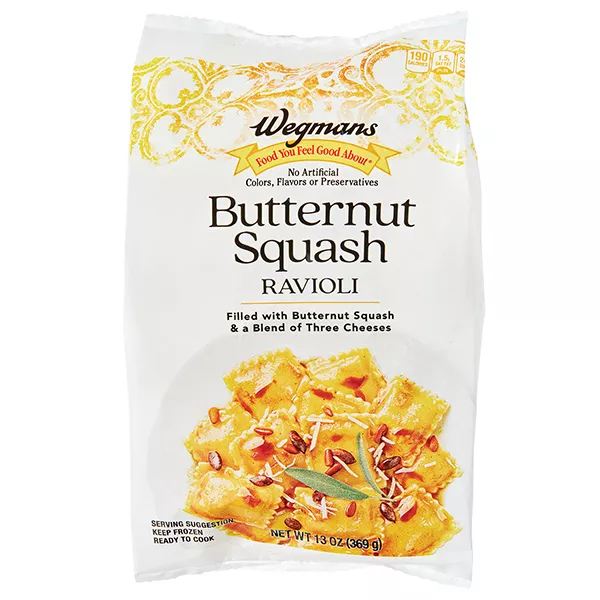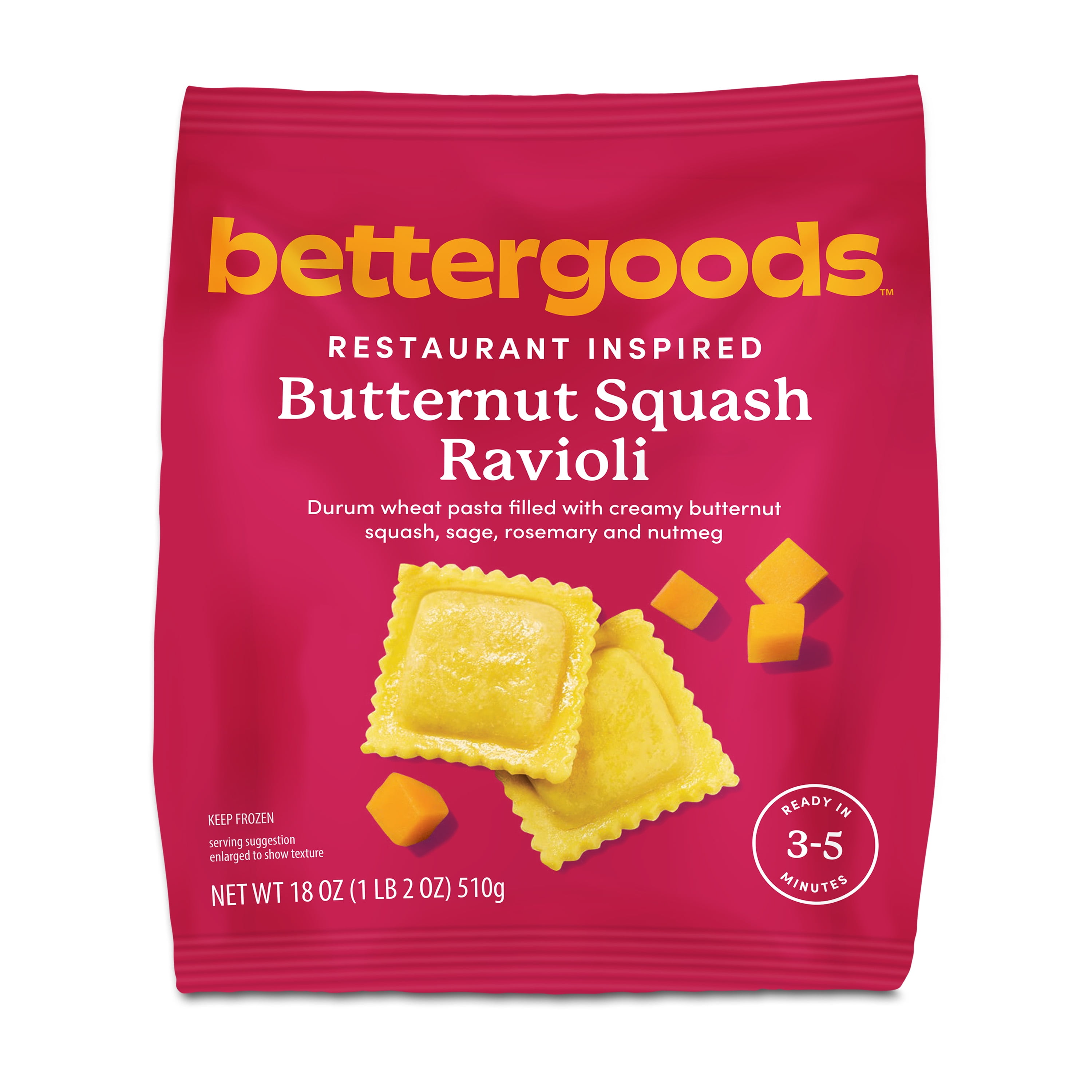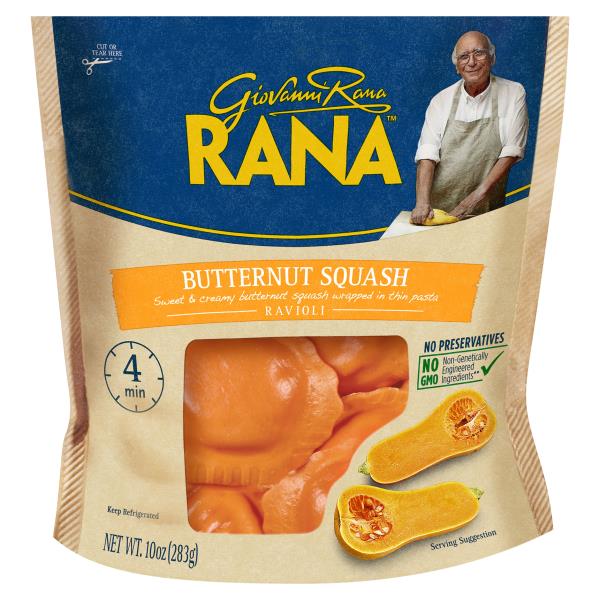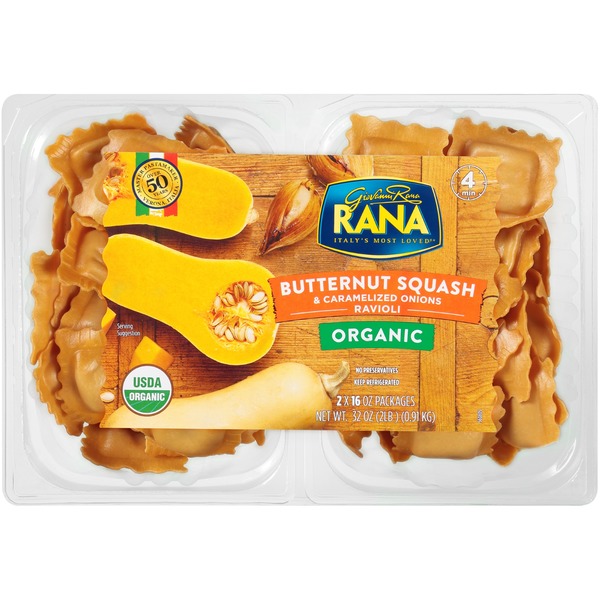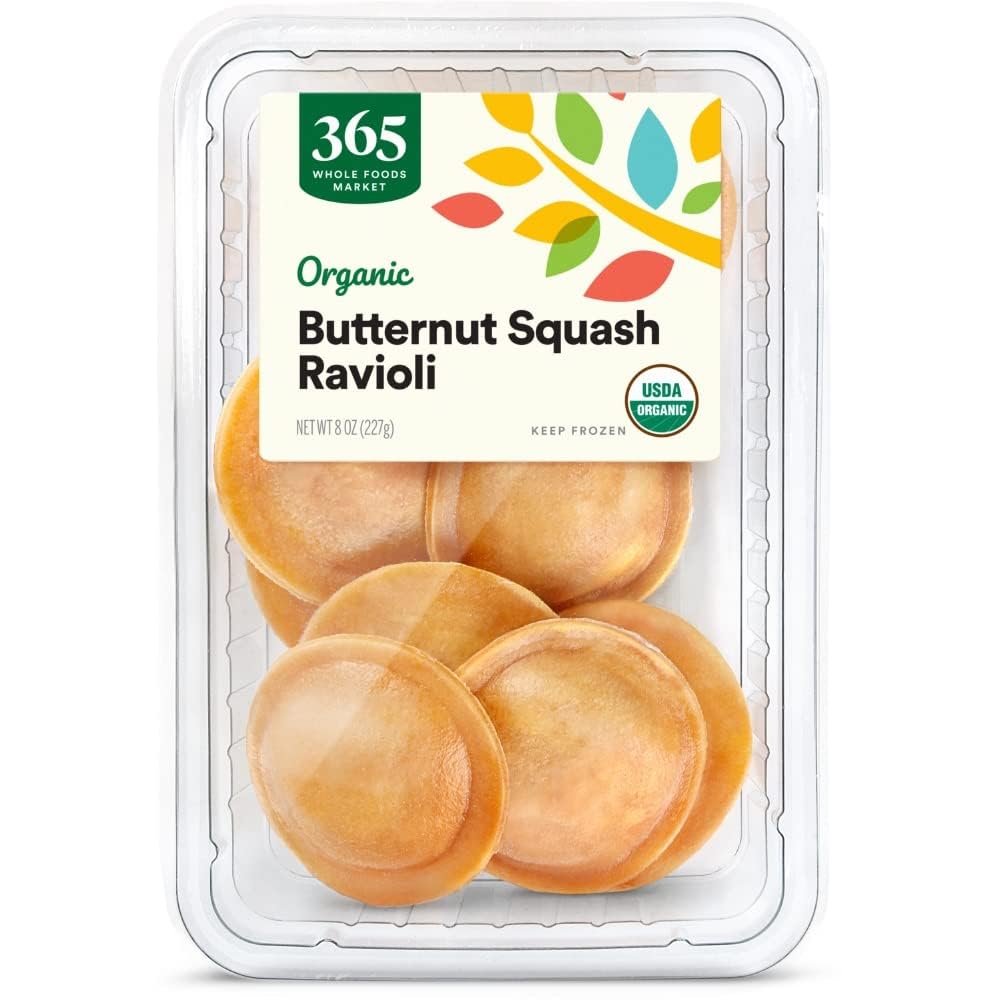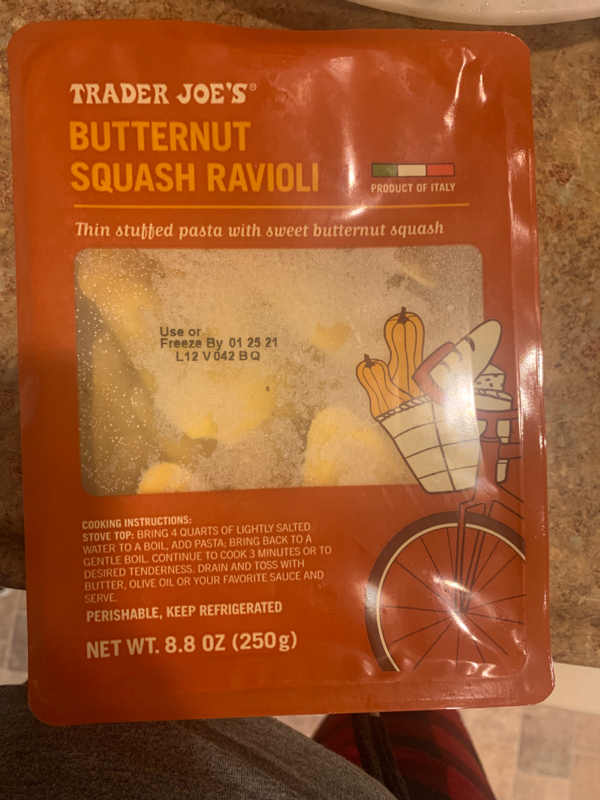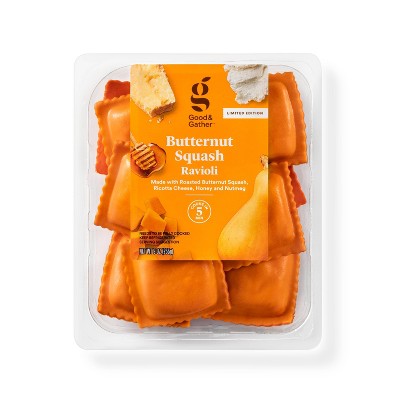MAIN DISHES
Butternut Squash Ravioli
Butternut squash ravioli is a popular Italian pasta dish featuring a delicious filling of seasoned butternut squash puree encased in delicate sheets of fresh pasta dough. These ravioli are typically prepared with a mix of squash, ricotta cheese, and various herbs and spices. A popular choice among gourmet enthusiasts and home cooks, butternut squash ravioli is characterized by its tender texture and rich, mildly sweet flavor profile.
Served as an appetizer or a main dish, butternut squash ravioli is often accompanied by an equally delectable sauce such as a brown butter sage sauce or a light cream-based sauce. These flavor combinations accentuate the velvety, warm sweetness of the squash filling, creating a harmonious blend of flavors that is both comforting and indulgent.
67%
CARBS
20%
FAT
13%
PROTEIN
140 Butternut Squash Ravioli Products
Italian Classics Butternut Squash Ravioli, Italian Classics, Butternut Squash
Wegmans Organic Amore Butternut Squash Ravioli
Wegmans Butternut Squash Ravioli
bettergoods Butternut Squash Ravioli
Rana Ravioli, Butternut Squash
Organic Rana Ravioli Savory Butternut, 2 X
365 by Whole Foods Market, Ravioli Butternut Squash Organic, 8 Ounce
Butternut Squash Triangoli
Butternut Squash Ravioli
Kite Hill Butternut Squash and Almond Milk Ricotta Ravioli Pasta, 9 Ounces, Dairy Free, Non-GMO, Vegan
Butternut Squash Ravioli Is Frequently Used With
Butternut Squash Ravioli FAQ
Butternut squash ravioli is often considered a delicacy, featuring a tasty blend of mildly sweet butternut squash encased in silky pasta dough. The most common questions when cooking with it are related to preparation, from the making of the ravioli itself, to the choosing and making of accompanying sauces.
Where people generally go wrong is in the preparation of the butternut squash filling. The squash must be cooked until it is perfectly soft and then pureed until smooth for the best texture. Another common mistake is overcooking the delicate ravioli - they should only be cooked until they float to the top of the boiling water, which usually takes just a few minutes.
To get the most out of your butternut squash ravioli, pair it with a simple sauce that will not overpower its flavors. A browned butter and sage sauce or a light cream-based sauce typically works well. It's also often garnished with shavings of hard cheese like Parmesan.
Little known tip: add a pinch of nutmeg to your butternut squash filling to enhance its richness, and don't be afraid to experiment with other herbs and spices.
How can I make homemade butternut squash ravioli?
How do I know when my ravioli is done cooking?
What kind of sauce goes well with butternut squash ravioli?
Can I freeze butternut squash ravioli?
Can I add other ingredients to my butternut squash filling?
Do I need to peel butternut squash before roasting for ravioli?
How can I make my ravioli edges stick together?
Why is my homemade ravioli falling apart while cooking?
Can I use wonton wrappers instead of pasta dough?
Can I bake my butternut squash ravioli instead of boiling?
Expiration & Storage Tips
When does butternut squash ravioli expire?
If you've bought a package of fresh, unopened butternut squash ravioli from the store, pay attention to the 'best by' or 'use by' date on the package - this is usually a good indication of when you should use the product. On average, unopened fresh ravioli can last 1-2 weeks in the refrigerator from the date of purchase. Once opened, however, the countdown begins. Most manufacturers recommend consuming opened ravioli within 2-3 days. However, if you've frozen the ravioli, they can stay good for up to two months. Homemade butternut squash ravioli follows the same rules, except you should consume them within 2-3 days in the refrigerator or freeze them for longer storage.
How do you tell if butternut squash ravioli is bad?
If your butternut squash ravioli has gone bad, you'll notice a few tell-tale signs. First, check for obvious signs of mold or discoloration. The ravioli should retain their original orange-yellow color; if they're grayish or greenish, & it's time to toss them. Another sign a product has gone off is a change in smell. If the ravioli give off an unpleasant or strong sour odor, it’s likely they’ve spoiled. The texture can also be a giveaway - if the pasta feels slimy or sticky to the touch, it's best to throw it away.
Tips for storing butternut squash ravioli to extend shelf life
• Always refrigerate fresh ravioli if you're not going to cook them right away. Ravioli should be stored at a temperature below 40°F to prevent bacteria from growing.
• If you've opened a package but can't use all the ravioli at once, store the remainder in an air-tight container to prevent them from drying out.
• Freezing fresh ravioli is a great option for long-term storage. To do this, arrange the ravioli in a single layer on a baking sheet and freeze them. Once frozen, transfer the ravioli into a sealed freezer bag or container. This method called 'flash freezing' prevents the ravioli from sticking together.
• When ready to cook your frozen ravioli, no need to defrost - just add them directly to boiling water. However, they may need a bit longer to cook than fresh ones.
• Made too much cooked ravioli? No problem! Leftovers can be stored in an air-tight container in the refrigerator for up to 2 days. Simply reheat in the microwave or on the stovetop when ready to serve.
EXPIRES WITHIN
19 - 29
MONTHS
Equivalents
Substitutes
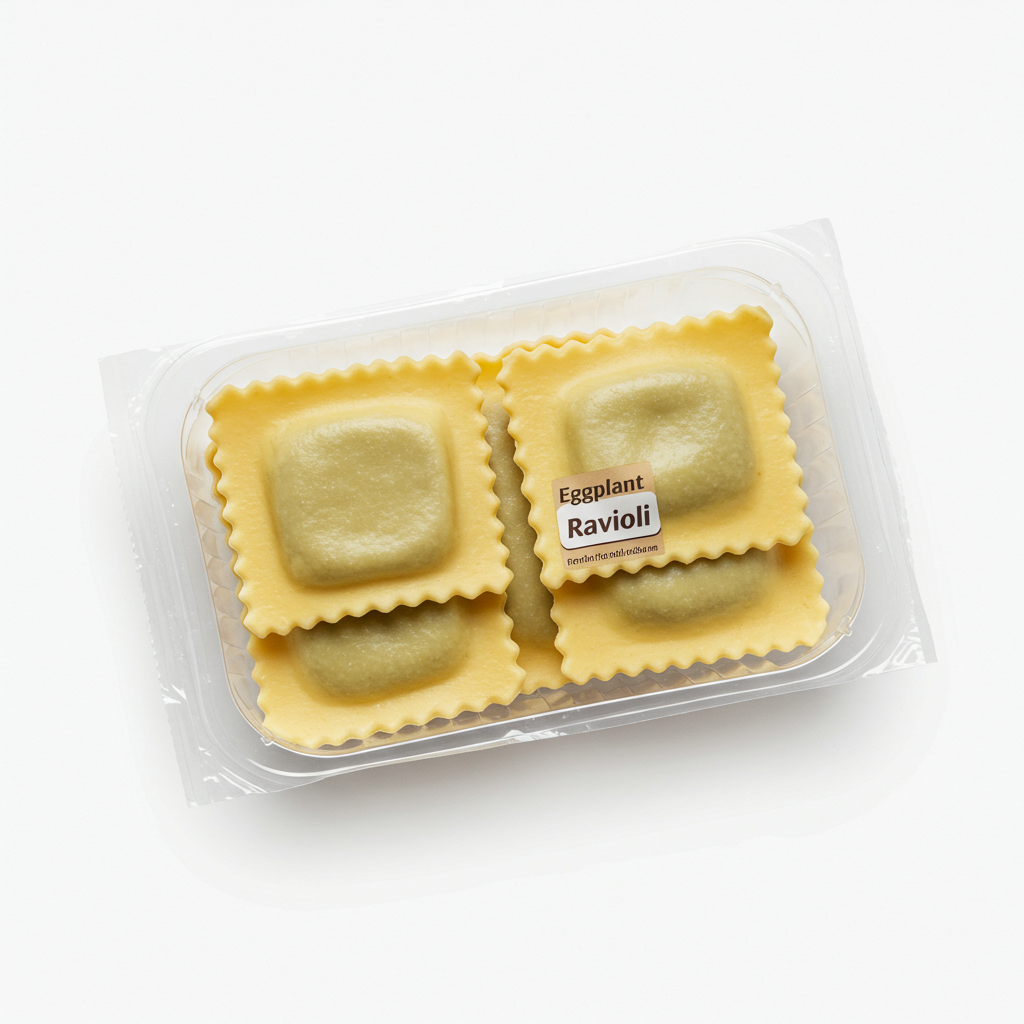
Eggplant Ravioli

Gluten Free Cheese Ravioli
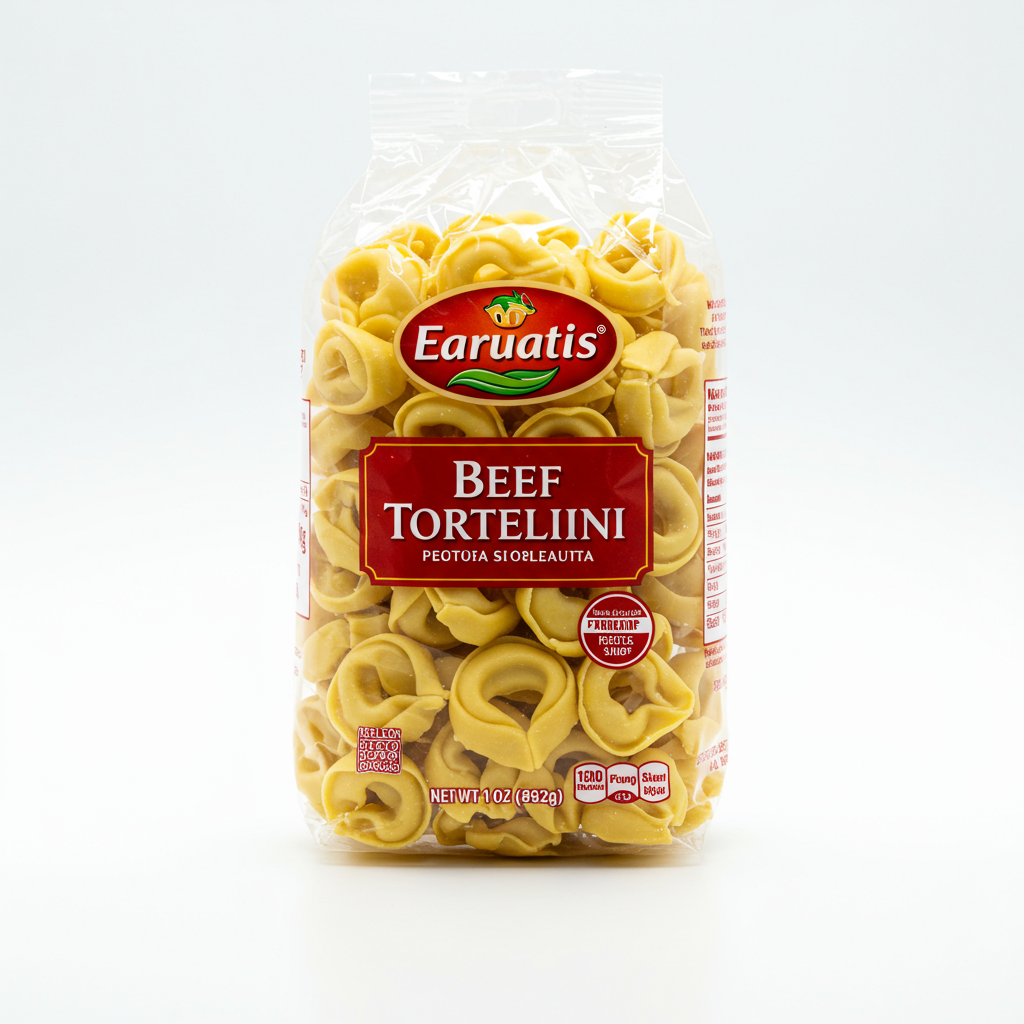
Beef Tortellini Pasta

Tortellini Pasta

Beef Ravioli
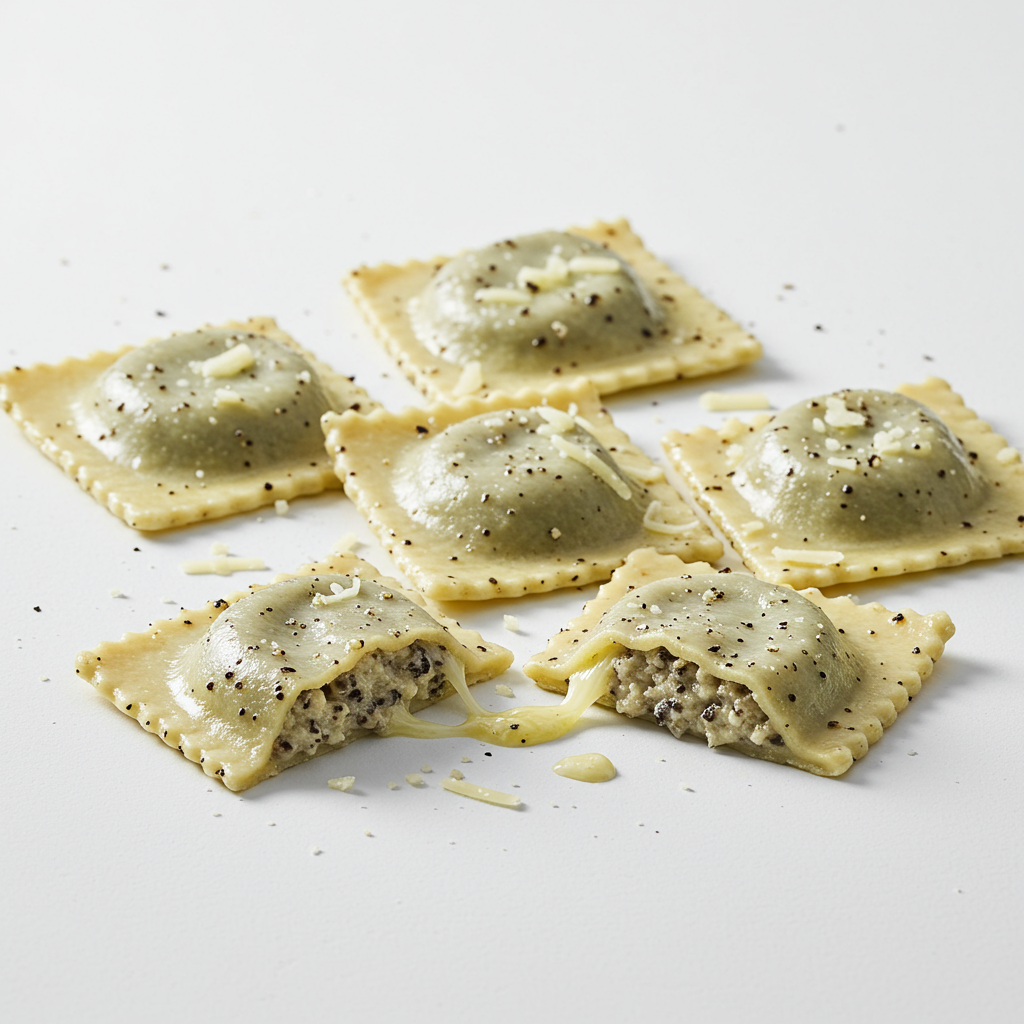
Black Pepper Cheese Ravioli

Cheese Ravioli

Chicken Ravioli

Lobster Ravioli

Mushroom Ravioli
See All
Health Info
Macros
72g
CARBS
21g
FAT
14g
PROTEIN
Allowed on these diets
LOW FAT
HIGH CALCIUM
VEGETARIAN
VEGAN
Contains these allergens
MILK
WHEAT

